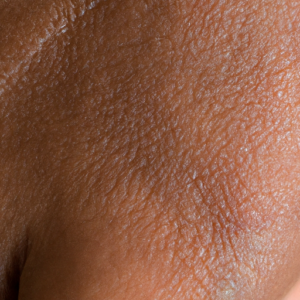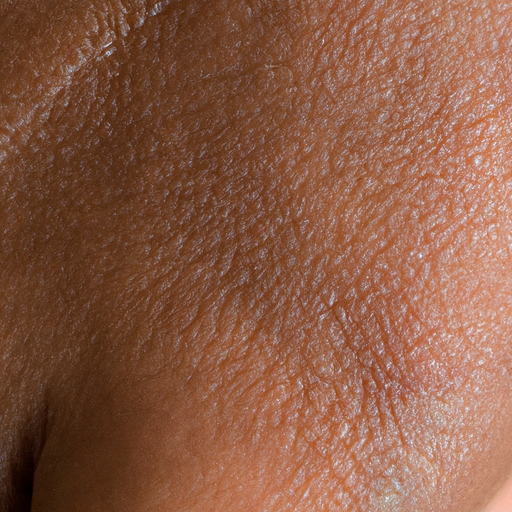Welcome to My Blog About Lentigo!
Hey there! I’m glad you’re here to learn more about lentigo. Lentigo is a type of skin spot that often appears as we age. It’s usually harmless, but it’s important to be aware of it and take precautions. Let’s dive in and see what you need to know about lentigo.
Oh no! Am I experiencing symptoms of Lentigo?
So you’ve noticed some unusual looking spots on your skin that just won’t seem to go away. Maybe they even itch or hurt a little. Before you start panicking, let’s go over what the symptoms of Lentigo are. Typically, small dark or brown patches of skin appear on areas that have been exposed to the sun, such as the face, hands, and arms. These spots are typically flat and sometimes oval in shape, and can be as small as a few millimeters or as large as a centimeter. They usually don’t cause any pain or discomfort but can be unsightly.
If you have fair skin and a history of sun exposure, you may be at greater risk for developing Lentigo. It’s always good to keep a close eye on any changes or abnormalities in your skin, so if you notice any of these symptoms, be sure to schedule an appointment with your dermatologist.
Diagnosing Lentigo: How to Know if You Have It
When I first noticed a strange freckle-like spot on my skin, I wasn’t sure what to think. Was it just a harmless sunspot, or something more serious like lentigo? To know for sure, I had to undergo a few diagnostic exams that helped to identify the cause of the spot and determine the course of treatment. Here are some of the diagnostic exams that you might need if you suspect you have lentigo:
Physical Examination:
The first step in diagnosing lentigo is to undergo a physical examination by a dermatologist or other medical professional. During this exam, the doctor will inspect the affected area of skin and ask you questions about your medical history and any recent changes in the appearance of your skin. They may also use a specialized tool to look more closely at the spot and determine if it has any unusual features like irregular borders or unusual colors.
Skin Biopsy:
If the physical examination suggests that the spot may be lentigo, your doctor may recommend a skin biopsy. This is a minimally invasive procedure that involves removing a small sample of skin from the affected area and examining it under a microscope. This can help to confirm the diagnosis of lentigo and rule out other potential causes of the spot, like melanoma.

In rare cases, your doctor may recommend additional imaging tests like an ultrasound to examine the deeper layers of skin and detect any abnormalities that may be contributing to the lentigo. This is typically only necessary if there are other signs or symptoms that suggest a more serious underlying condition.
By undergoing these diagnostic exams, you can get a clearer picture of what’s causing your lentigo and what steps you should take next to treat it. While it can be scary to receive a diagnosis like this, remember that early detection and treatment can greatly improve your prognosis and help you to maintain healthy, beautiful skin for years to come.
Treatments for Lentigo: Fighting Those Pesky Spots
Ah, those pesky dark spots on the skin, otherwise known as lentigo. They may not pose a serious health risk, but they can still be annoying. Luckily, there are treatments available to help get those spots under control. Here are a few options to consider:
First, there’s laser therapy. This involves using a laser to target the pigmented cells in the skin. The laser breaks down the melanin, causing the spots to fade. It’s a quick and relatively painless procedure, although multiple sessions may be necessary.
Another option is freezing, which is also called cryotherapy. This involves using liquid nitrogen to freeze the pigment cells, which causes the skin to peel away and new, unpigmented skin to grow in its place. This is a bit more intense than laser therapy and may cause some discomfort or scarring, but it can be effective.
If you prefer a non-invasive option, there are topical creams available that can help reduce the appearance of lentigo. Some contain hydroquinone, which lightens the dark spots, while others use retinoids or corticosteroids to speed up cell turnover and reduce pigmentation. Be sure to talk to your dermatologist about which cream might be best for you.
Overall, the best treatment for you will depend on the severity of your lentigo and your personal preferences. Be sure to consult with a dermatologist before making any decisions. Remember- prevention is always the best medicine, so be sure to wear sunscreen to prevent the development of new spots. Want to learn more? Check out this informative article on lentigo by Bright Side Beauty.
Don’t Get Spotted: Tips to Prevent Lentigo
Hey there! As someone who’s experienced dealing with lentigo, I know how frustrating and distressing it can be to have those pesky brown spots on your skin. While there are treatments available, prevention is always better than cure. Here are some tips that can help prevent lentigo.
First, limit your sun exposure. As we all know, the sun’s UV rays can damage our skin and cause various skin diseases, including lentigo. Make sure to apply sunblock with high SPF before going out and avoid staying under the sun for prolonged periods, especially during peak hours.
Next, maintain healthy habits. According to experts, having a balanced diet and exercising regularly can help improve our skin’s health and prevent skin diseases. Avoid smoking and limit alcohol intake, as they can have adverse effects on our skin as well.
Lastly, be vigilant with any changes on your skin. Keeping track of the appearance and size of moles and freckles can help detect any signs of lentigo early on. If you notice any unusual growth, color, or shape, make sure to consult with a dermatologist as soon as possible.
By following these simple tips, you can prevent lentigo and other skin diseases and keep your skin healthy and beautiful. Always remember, prevention is key!
Conclusion: Don’t Take Chances with Your Skin!
Well folks, that’s all I’ve got for you on the topic of lentigo. But before I wrap this up, I want to emphasize how vital it is to keep an eye on your skin and seek professional help if you notice any changes.
As we’ve learned, lentigo is a common pigmentation disorder that can affect people of all ages and backgrounds. Whether you’re fair-skinned or have more melanin, the risk is there, and it’s never too early to start taking preventative measures.
If you notice any unusual freckles or marks on your skin, be sure to get them checked out right away. Early detection and treatment are key to preventing serious complications that could put your long-term health at risk.
Remember, the best way to stay safe is to stay informed. So take the time to educate yourself on the signs, symptoms, and treatment options for lentigo, and don’t hesitate to reach out to your doctor if you have any concerns.
Thanks for reading, and stay safe out there!
